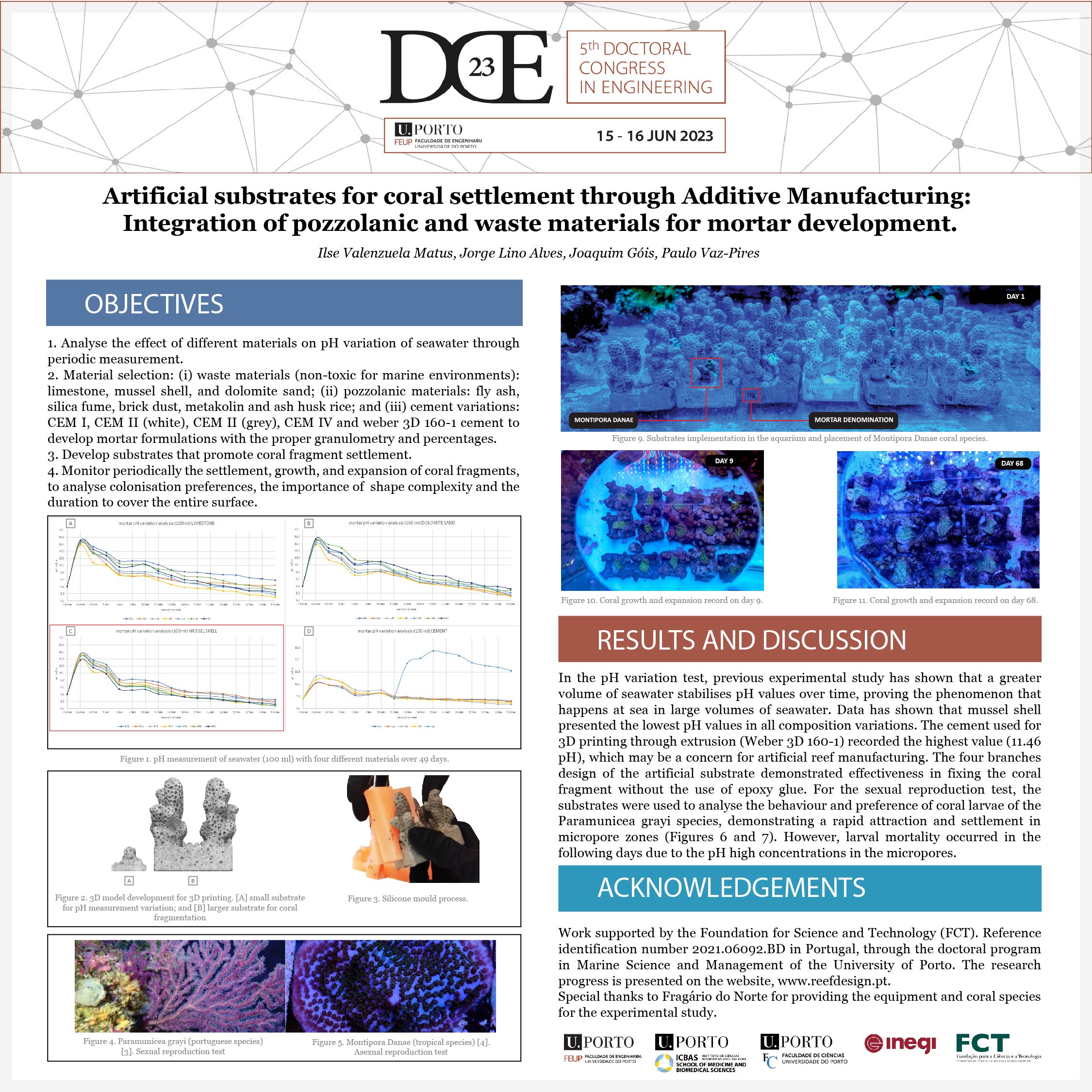5TH DOCTORAL CONGRESS IN ENGINEERING 2023 – POSTER

Category
White PapersAbout This Project
The 5th Doctoral Congress in Engineering
The development of substrates and artificial reefs has been an effective restoration method. Due increasing availability of materials, there is limited understanding how physical and chemical properties can influence coral recruitment success and early benthic community development. This article reveals the potential of materials obtained from mineral and organic waste with the aim of promoting circular economy. Three raw materials composed mussel shells, limestone and dolomitic sand were mixed with fly ash, silica fume, brick dust, metakaolin and three cement categories: CEM I, CEM II (white and grey) and CEM IV to develop 21 mortar formulations. Additive Manufacturing and silicone molds were used to develop 3D substrates samples with morphology. This research aims to study how the physical and chemical properties may affect coral water conditions (pH variations), coral larval transplantation and their growth rate. Periodic pH measurements variation of the substrates was performed in 100 ml of seawater. Additionally, atomic emission spectrometry was used on 4 formulations substrate (with the most stable pH value) to determine macronutrients and microelements over a wide range of concentrations, to demonstrate if mortar formulations affect water conditions and consequently coral survival and growth. The results demonstrated that pozzolanic materials decreased the pH of seawater after 3 weeks, stabilizing 9.2-9.3, except for CEM II white, where the pH 10.4. Considering the first month of substrate implementation aquarium, Montipora Danae coral species preference of settlement in mussel shell tiles. These results are promising to manufacture larger scale structures where mineral and organic waste nutrients are potentially beneficial for coral settlement and growth.


